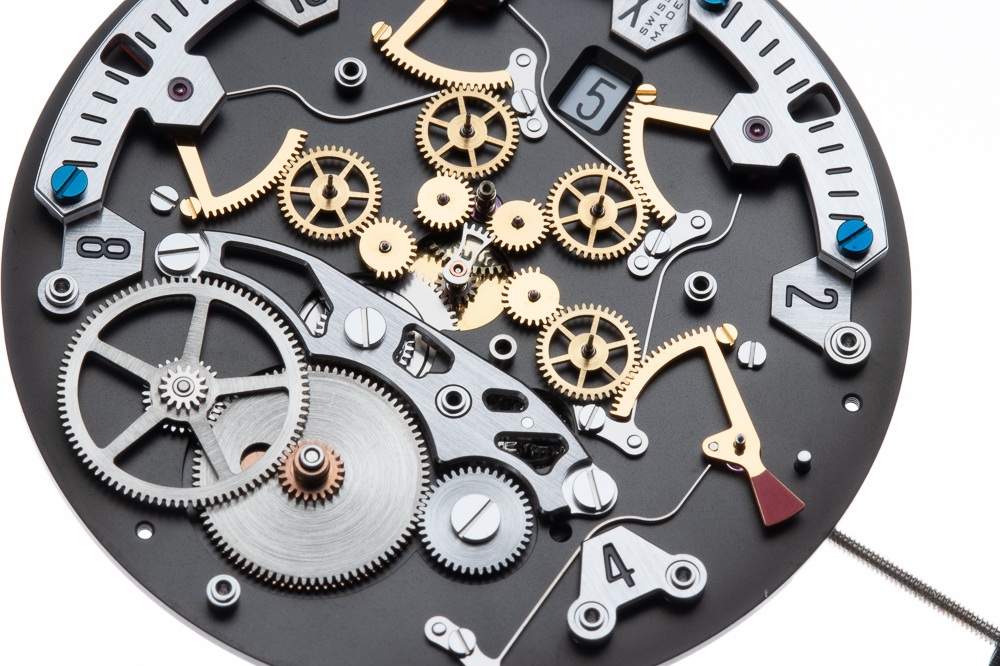The Reason
An original multiple retrograde seconds animation module made by Dubois Dépraz, exclusively for Pierre DeRoche.
The module calibre 15115 has 4 retrograde seconds hands which follow each other starting from twenty to the hour, until twenty passed, then break for 20 seconds. At six o’clock on the dial there is a second time zone (GMT) linked with a 24 hour day/night indicator which are both corrected from the winding crown.
Diameter 36.60 mm Thickness 2.55 mm Number of components 91
The short film below shows an accelerated view of the retrograde seconds hands, note the windows at the centre of each 10 second dial sector, that become filled with the red tail of each seconds rack adding an additional element to the animation.
The minute and hour hands are held in place by a conical brass pin, similar to those seen in early pocket watches and clocks as well as can be found holding cams in place on repeaters.
The GMT 1/2 hours indication. The majority of GMT indications only correct for complete hours omitting the possibility to correct for territories such as India. Here, 30 minutes increments are included.
The hands removed from the module.
Recto-verso of the blued steel hands filled with Super LumiNova and sealed on the back of the hands with white lacquer. Below the GMT, 24hour and retro-grade seconds hands.
The bridges holding down the retrograde seconds rack also act as the dial indication for the ten seconds segments.
The second racks are made from nickel silver, the bridges and module main-plate from brass.
Continuing to remove the dial sectors.
The lower dial removed.
The central bridge removed that hides the main driving wheels and pinions.
The central steel rack rotates every 60 seconds driving each of the retrograde seconds trains.
All bridges removed showing the full set of gear trains.
Underneath the GMT wheel assembly.
The module still sitting on the base movement but virtually disassembled.
Summary
The animation of the retrograde seconds' hands is well executed, consuming a minimum of energy from the base calibre. The overall construction is simple, easily assembled and adjusted. The open design of the dial allows many of the driving elements to be viewed. The execution is clean, often hand-finished and hand-assembled.
To learn more about Dubois Dépraz & Pierre DeRoche





















